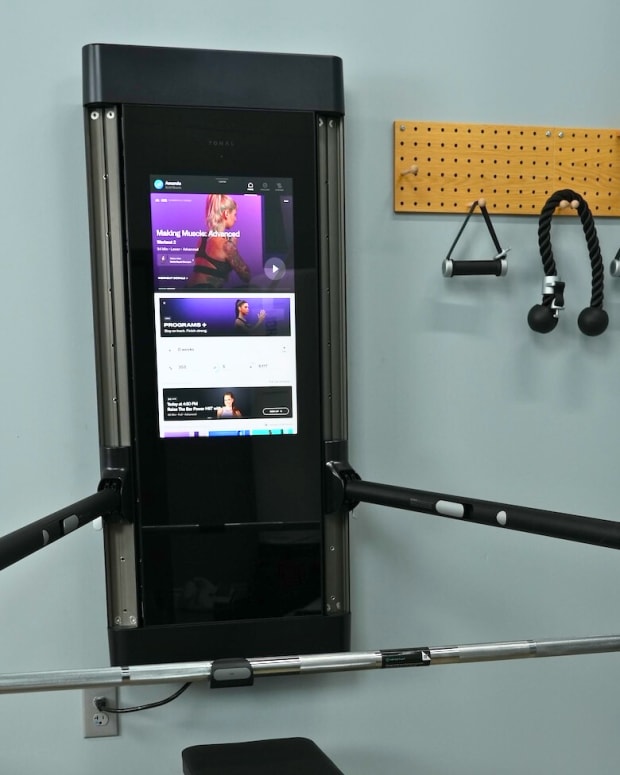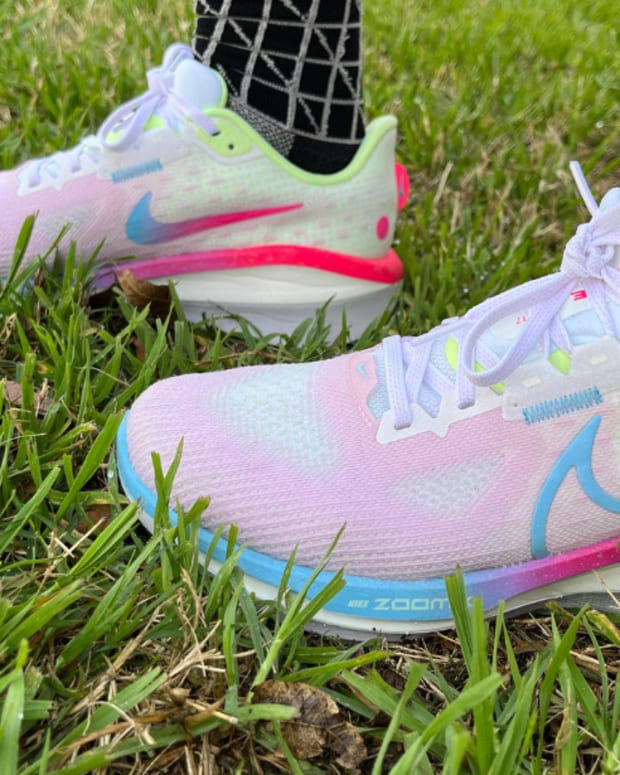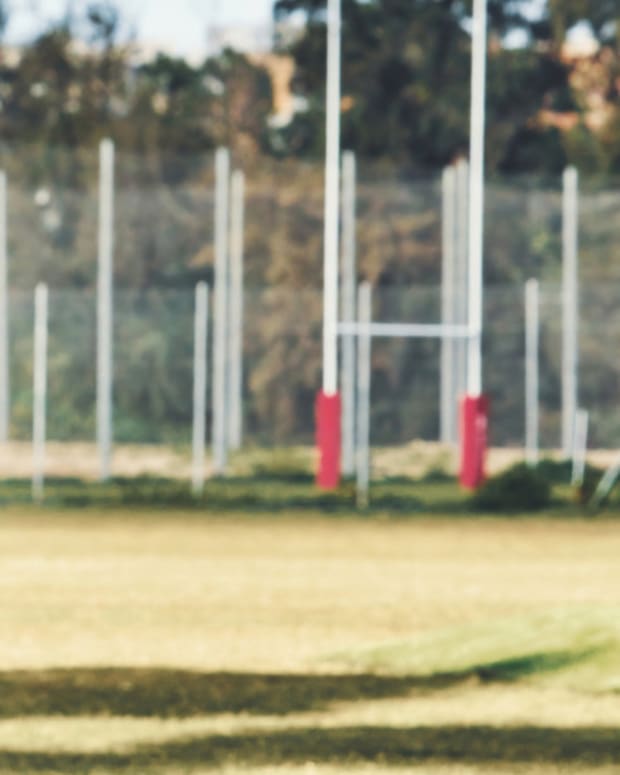The products featured in this article have been independently reviewed. When you buy something through the retail links on this page, we may earn commission at no cost to you, the reader. Sports Illustrated editorial staff are not involved in the creation of this content. Learn more here.
A trusty set of hiking poles can be the difference between a good hike and a great one—and potentially the difference between a rolled ankle or not. They offer extra points of contact with the ground, which help you keep your balance on rough terrain. They can also allow you to incorporate your upper body as you propel yourself over obstacles like rocks, logs, streams or crevices. And while not essential to hiking the same way hiking shoes are, they can elevate the hiking experience, both uphill and down—they can also help take the weight off your knees on steep downhill trails. And they’re great to have in hand if you want to test the stability of a chunk of ice or stone before putting your weight on it.
We’ve collected the best trekking and hiking poles on the market in 2024. What you’ll find here is a range of options that includes something for nearly every preference, price point and person plus a buying guide on how to select the right trekking pole for your needs.
Our Top Picks for the Best Trekking Poles of 2024:
- Best Trekking Poles for Hiking: Black Diamond Trail Trekking Poles
- Best Budget Trekking Poles: Black Diamond Trail Explorer 3 Trekking Poles
- Best Ultralight Trekking Poles: REI Co-op Flash Carbon Compact Trekking Poles
- Best Folding Poles: Leki Black Series FX Carbon Trekking Poles
- Best Trekking Poles for Men: MSR DynaLock Ascent Carbon
- Best Trekking Poles for Women: Leki Jannu Trekking Poles
- Best Carbon Fiber Trekking Poles: Black Diamond Distance Carbon Z Trekking Poles
- Best Aluminum Trekking Poles: Leki Traveler Aluminum Trekking Poles
Best Trekking Poles for Hiking: Black Diamond Trail Trekking Poles
Key Features:
- Price: $120
- Weight per pair: 1 pound, 1 ounce
- Type/locking mechanism: External lever lock
- Shaft Material: 7075 Aluminum
- Grip Material: Foam
- Length: 25 to 55 inches
- Collapsed length or packed size: 25 inches
- Best for: Hiking
These Black Diamond Trail Trekking Poles top our list in terms of adjustability, value and comfort. They are made up of three telescoping sections, with the two lower ones sliding into the uppermost section for storage. To adjust the length of the pole, flip open the small levers at the joints and slide the sections to the height you prefer, then snap the lever closed.
With 30 inches of adjustable height and a maximum height of 55 inches, these poles are suitable for hikers up to six feet, four inches tall. The dual-density foam grips are designed to be soft yet durable, and have padded wrist straps to help keep them where you need them and not tumbling down a canyon.
While they’re not the lowest-priced option on this list (Check out the Black Diamond Trail Explorer 3 for the best budget-friendly trekking poles), they cost around just as much or less than the other mid-priced options available.
Pros:
- Longest height adjustability range in this list
- Average rating of 4.8/5 stars on Black Diamond’s website (58 reviews)
- Interchangeable tips and baskets
Cons:
- Only comes with metal tips, which some reviewers reported were slippery on pavement
Best Budget Trekking Poles: Black Diamond Trail Explorer 3 Trekking Poles
Key Features:
- Price: $60
- Weight per pair: 1 pound, 2.7 ounces
- Type/locking mechanism: External lever lock
- Shaft Material: Aluminum
- Grip Material: Rubber
- Length: 23 to 51 inches
- Collapsed length or packed size: 23 inches
- Best for: Your first thru-hike
While these trekking poles are similar to the Black Diamond model above, the company simplified the design a bit to make them available for half the price. Also constructed with 7000 series aluminum alloy, these poles feature rubber grips and a lightweight webbing wrist strap for added security. They offer a 28-inch range of height adjustability, which is designed to accommodate hikers as tall as 6' (and potentially taller) depending on pole preference.
They earned an average rating of 4.4/5 stars on Black Diamond’s website with 37 reviews. Verified Buyer Sarah S. noted in her 5-star review that, “They are bit on the heavy side, so keep that in consideration. But the weight is just a part of these super sturdy bad boys.”
Pros:
- Only 1.5 ounces heavier than poles twice their price
- Durable rubber grips
Cons:
- Tips not interchangeable
Best Ultralight Trekking Poles: REI Co-op Flash Carbon Compact Trekking Poles
Key Features:
- Price: $159
- Weight per pair: 12.9 ounces
- Type/locking mechanism: External lever lock
- Shaft Material: Carbon
- Grip Material: Foam
- Length: 35 to 47 inches
- Collapsed length or packed size: 23 inches
- Best for: Trail running
The REI Co-op Flash Carbon Compact Trekking Poles are designed to be as lightweight as possible while maintaining strength and durability. Low-profile baskets and foam grips add minimal weight to the carbon shafts, so the set weighs in at a low 12.9 ounces. While this is just a quarter pound lighter than most of the poles in this list, that makes quite a difference over the course of a 10 mile run.
Related Post: Tackle Every Terrain in the Best Trail Running Shoes
These lightweight trekking poles overall have a maximum length of 47 inches and a collapsed length of 23 inches, making them easy to stash in a pack or strap to a running vest. Oversized levers on the joints between sections allow for quick and easy length adjustment, even if you have gloves on.
Pros:
- Low price compared to other lightweight models
- Sizable locking levers for easy handling
- Compact, lightweight poles
Cons:
- Maximum length may be too short for some users over five feet, 11 inches tall
- Locking levers need to be tightened periodically
Best Folding Trekking Poles: Leki Black Series FX Carbon Trekking Poles
Key Features:
- Price: $270
- Weight per pair: 1 pound, 1 ounce
- Type/locking mechanism: External lever lock
- Shaft Material: Carbon
- Grip Material: Cork
- Length: 43 to 51 inches
- Collapsed length or packed size: 16 inches
- Best for: Backpacking
The Leki Black Series FX Carbon Trekking Poles unlock and fold into three sections along joints, resulting in a design made for quick collapsing down to a short, packable length of 16 inches. They fold down in a unique way: Instead of telescoping inside of the uppermost section of the pole, these collapse by separating at the joints like a tent pole. The cork grips sit at an eight-degree angle to keep your wrists in a neutral position and you have the option to add extended foam grips when needed for more intense climbs or hikes. The Black Series FX Carbon poles also come with easily interchangeable baskets, as well as flexible carbide tips designed to offer durable grip on a variety of trail surfaces.
Pros:
- One of the shortest in this list when folded
- Lightweight and tough carbon frame
Cons:
- Straps are thin and may not feel secure to some users
- Minimum length of 43 inches is longer than other models’ minimum length
Best Overall Trekking Poles for Men: MSR DynaLock Ascent Carbon Backcountry Poles
Key Features:
- Price: $190
- Weight per pair: 1 pound, 1 ounce (small) / 1 pound, 2 ounces (large)
- Type/locking mechanism: External lever lock
- Shaft Material: Carbon fiber
- Grip Material: EVA foam
- Length: 39 to 47 inches (small) / 47 to 55 (large)
- Collapsed length or packed size: 14.25 inches (small) / 17.25 (large)
- Best for: Steep climbs or rough terrain
The MSR DynaLock Ascent Carbon Backcountry Trekking Poles are ready for steep climbs and descents in year-round weather. The brand’s unique locking mechanism allows you to adjust the joint tension using a tiny integrated dial, making for easy on-the-trail tweaks without any tools. The poles have a single joint that offers 20 centimeters (about eight inches) of adjustability between the two sections. They come in two sizes-–small and large. Since they don’t have quite the range of length adjustability as other poles, make sure you select the size you need.
The Kevlar-reinforced carbon fiber poles are designed to be ultralight and ultra strong. They also feature a tent-pole style folding design that collapses down to 14.25 inches (size small) for convenient storage and packing. The extended foam grips give you additional hand position options for steep climbs, and the poles come with snow baskets you can swap out when necessary.
Pros:
- Compact size makes them very packable
- Folding design and carbon fiber frame
- Extended grip
- Multiple baskets included
Cons:
- Some users may find switching out baskets difficult
- The maximum length on the large poles may be too short for some users
Best Overall Trekking Poles for Women: Leki Jannu Trekking Poles Women
Key Features:
- Price: $120
- Weight per pair: 1 pound, 1.3 ounces
- Type/locking mechanism: External lever lock
- Shaft Material: Aluminum
- Grip Material: Cork/rubber
- Length: 35 to 49 inches
- Collapsed length or packed size: 25 inches
- Best for: Smaller hikers
When a product is designed for women typically that indicates it comes in smaller sizes and/or has smaller contact points (in this case, the grips) as well. This set of poles in particular feature Aergon Cor-Tec grips, which have an inclined grip angle of eight degrees, which supports your wrists in a neutral position for optimal control and comfort. The ergonomic grips are designed to accommodate various hand positions without straining your wrists as you hike, and the straps are made from a soft, lightweight fabric that won’t chafe your skin.
The three-section design collapses down to 25 inches for easy storage on a backpack when you’re on milder terrain. When you’re ready to use them, flip open the two levers and telescope the sections out as long as 49 inches. They also have an interchangeable basket system which allows you to swap them out for different terrain or snowy conditions, and the universal carbide tips flex up to 30 degrees, which helps protect the aluminum shaft from damage. All you’ll need are some hiking or walking shoes and you’re ready to hit the trails.
Pros:
- Interchangeable baskets
- Small, ergonomic grips
Cons:
- Max extension of 49 inches is slightly shorter than average
Best Carbon Fiber Trekking Pole: Black Diamond Distance Carbon Z Poles
Key Features:
- Price: $190
- Weight per pair: 10.5 ounces (120 cm)
- Type/locking mechanism: Button-actuated
- Shaft Material: Carbon fiber
- Grip Material: EVA foam
- Length: 100, 110, 115, 120, or 130 cm fixed-length options
- Collapsed length or packed size: 16 inches (120 cm)
- Best for: Trail runners who like speed hiking; long-distance treks
Weighing in at 11.1 ounces or less (there are five size options to choose from), the Black Diamond Distance Carbon Z Trekking Poles are the lightest model on our list of top picks. These ultralight, minimalist poles are designed for speed. The length is not adjustable, but the shafts are collapsible with the push of a button for easy breakdown. The poles come with swappable rubber tips and carbon tips to adjust to your terrain, while the reinforced support in the joints give the poles added durability. And the EVA foam grip material and moisture-wicking strap provide breathable comfort and control.
Pros:
- Lightweight carbon shaft
- Sweat-wicking foam grip
Cons:
- Foam handles may be prone to wearing out easily
- Non-adjustable length
Best Aluminum Trekking Poles: Leki Traveler Aluminum Trekking Poles
Key Features:
- Price: $160
- Weight per pair: 1 pound, 2 ounces
- Type/locking mechanism: External locking mechanism
- Shaft Material: Aluminum
- Grip Material: Cork
- Length: 35.4 to 51.1 inches
- Collapsed length or packed size: 26 inches
- Best for: Backpacking across Europe
Designed for durability, these poles are made from tubes of Aluminum HTS (heat treated shaft) 6.5 and feature cork grips and a super-secure hand strap system. The Nordic Shark Frame Mesh strap is unique in that it first slides over the hikers hands like a fingerless glove, and then the “glove” has a mechanism that allows you to connect it with a receiver on the grip (so to let go of the pole, you disconnect your glove but leave it on your hand). This attachment glove clicks in and out of the pole quickly and is compatible for all Shark poles from Leki. The grip itself is lined with cork, which absorbs moisture from sweaty hands to help hikers keep better control over the poles. Like most poles in this list, it has two external locking levers that allow length adjustments, and when fully collapsed the poles measure 26 inches long for packing in a backpack or suitcase. If you’ll be using your trekking poles in a paved approach to the trailhead, the Leki Traveler Aluminums come with rubberized traction pads that slip over the poles’ tips for optimal grip on sidewalks and roads (plus protects carbide tips from the pavement).
Pros:
- Sweat-wicking cork grips
- Rubberized tip caps for pavement
Cons:
- Glove-style straps are a strong fashion commitment
How to Use a Trekking Pole
There are a few ways to incorporate trekking poles into your hiking experience, and quite a few benefits of doing so. While many of these poles are sold in sets of two, hiking with even one can offer a strategically-placed third point of contact with the ground, keeping you more stable and balanced as you pick your way up or down rocky sections of trail.
If you’re using two poles on flat-to-moderate terrain, it can be beneficial to your momentum and balance to swing your arms naturally (walk with the opposite arm out in front of each leg), alternating which pole is touching the ground with each step. As you walk, the poles can drag behind you and then help you propel yourself forward. It is helpful to focus on walking in the most natural way possible, utilizing the help of the poles as a guide but not planting the poles firmly in the ground.
On more challenging terrain, you may find occasions you want to plant both poles in front of you at the same time to support you up steep grades or over obstacles like logs, rocks, or stream crossing. This technique can also help alleviate the pressure some hikers feel in their knees on long descending trails.
Additionally, it can be helpful to focus on your grip: the looser your grip, the more range of motion you’ll have as you maneuver the poles. You should be flicking the pole forward with each step you take, ensuring you have a comfortable grip.
How We Chose the Best Trekking Poles
In order to choose the eight best trekking poles we selected for this list, we did a lot of market research, and compared a myriad of features including weight, price, adjustability and length. We considered the versatility of the poles in terms of use case and weather, as well as height adjustment. We compared the locking mechanism design and ease-of-use between similar poles, and included a variety of options to accommodate a wide range of user preferences. We considered different grip materials and designs for comfort and function, as well as shaft materials in terms of weight and durability. Once we narrowed down our list to trekking poles that suited our criteria, we scoured the user reviews to ensure we were picking tried-and-true crowd favorites with positive feedback from purchasers. Regardless of the type of adventure you’re headed out on, you should find a trekking pole to suit your needs.
Related Post: The Best Kayaks for Your Next Adventure
What to Look for When Choosing a Trekking Pole
Grips
The grips on the poles in our list vary in material and design, but most are made of cork, foam, rubber or a combination of those three. Foam is the lightest-weight option, but tends to get sweaty in your palms, while cork does a better job wicking moisture to keep your hands dry and dexterous. Rubber is the heaviest material, but also the most durable option. As far as design, this greatly depends on a hiker’s personal preference. The Leki models in this list feature the Aergon Cor-Tec grips, an ergonomic design made from rubber and cork, with an eight-degree grip angle for a more natural wrist position. The ultralight Black Diamond Distance Carbon Z Trekking Poles, on the other hand, feature a simplified foam grip with a row deep grooves for ventilation.
Weight
The poles in this list range in weight from 10.5 to 18.7 ounces (1 pound, 2.7 ounces). While the difference between the heaviest and lightest models is only 8.2 ounces (about a half-pound), this is not a negligible amount when it comes to something you’ll be carrying for miles. Depending on how long the hikes and treks are that you plan to be using your trekking poles for, you may want to consider a lighter pair the further you’ll be going. However, lightweight poles are typically made from carbon, a more expensive material than aluminum, and this is usually reflected in the overall price of such lightweight trekking poles.
Material
The poles in our list are made from either aluminum or carbon. Aluminum is the heavier, more durable (and usually less expensive) material of the two, while carbon poles are ultra-lightweight, but more prone to dents and dings, as well as a bit more pricey.
Packed size
All the poles in this list collapse down to a shorter length in order to make them easier to strap to a backpack or tuck inside a suitcase for travel. The model in our list that packs the shortest is the small-size option of the MSR DynaLock Ascent Carbon Backcountry Poles, which fold down to 14.25 inches in length. This makes them ideal for strapping to smaller packs or a running vest, or stuffing inside a suitcase. If packability isn’t a concern because you always drive the trailhead and keep your trekking poles in your trunk, the 26-inches-when-folded Leki Traveler Aluminum Trekking Poles will probably get the job done.
Adjustability
Most adjustable trekking poles are made of two to three segments that connect by telescoping in and out of each other, or by joining together like tent poles. The ones that join like tent poles are typically a fixed length, while the telescoping variety offer an adjustable range of length options. Some fixed-length models have a button-actuated cable inside keeping tension between the segments as you hike. Many telescoping trekking poles’ joints are locked in place by a small, hand-operated lever to keep them from collapsing on you when you need them most.
Baskets
The flat, circular “basket” above the tip of your trekking pole helps keep them from sinking too deep into soft surfaces. For treks on packed dirt and rock, a low-profile basket generally is sufficient. If you’ll be hiking in snow, sand, or mud, consider a pair of poles with wider baskets, or at least the option to swap them on when you need.
Tips
Trekking pole tips are made to be grippy and durable, and are often made of a material called carbide, a carbon-metal alloy. This material is hard, light and strong, allowing it to pick into the dirt or ice without slipping and stabilize the pole. Carbide tips work best on softer trails and surfaces; it tends to slide around on smooth surfaces like concrete. If you plan to use your trekking poles on sidewalks or paved roads, consider a model that has rubberized tips, or comes with rubber caps that grip the pavement a bit better.
FAQs
What is trekking vs hiking?
Trekking is hiking’s more intense cousin. While some hikes definitely can be intense, trekking is more closely related to backpacking, and often involves days or weeks traversing long routes over rougher terrain, like the Annapurna Circuit in Nepal or the Camino de Santiago through Europe. Hiking, by definition, tends to involve shorter trips on trails that have been specifically cleared for hikers. Trekking poles can be beneficial for both activities.
What is the difference between a walking stick and a trekking pole?
While walking sticks and trekking poles share the same purpose, a walking stick is like a trekking pole’s resourceful uncle: Rudimentary and a little rustic, but definitely gets the job done. A walking stick is often identified by its wooden construction—it can literally be a stick that you find along the trail (and that one is free). However, store-bought or forest-found walking sticks are a fixed length, which can limit their versatility unless you find one just right for you.
Is it better to hike with one pole or two?
It depends on your preference: Using two poles can give you a better sense of control, as well as offer a more balanced workout since you have to use both sides of your upper body for the striding motion. However, sometimes two can start to feel like a handful if you’re simply looking for a little assistance on more dynamic sections, and one pole still offers the boost and balance benefits you seek.
How much should you spend on trekking poles?
However much the poles are that fits within your budget and fits your needs! A more expensive model isn’t necessarily better if they aren’t designed to be used in the conditions you plan to use them for.
Are aluminum poles better than carbon poles?
Poles constructed from either aluminum or carbon fiber are lightweight and sturdy. Generally, however, aluminum tends to be a more durable metal than carbon fiber, while carbon is lighter and doesn’t vibrate from impact as much as aluminum does, making it a more comfortable option.
Does trekking pole weight matter?
The farther you’re hiking, the more you’ll benefit from lighter gear. A couple ounces won’t make much of a difference over a short day hike, but could definitely add up over a month-long thru-hike. Many backpackers like to buy the lightest gear possible to minimize the weight of their pack overall, which helps them save energy and keep up a quick pace. If minimal pack weight is something you want to prioritize for shorter hikes as well, a set of lighter poles can definitely contribute to this.
How long should my trekking poles be?
When you hold the pole straight up and down with the tip on the ground, your elbow should bend at a 90-degree angle when you’re comfortably holding the grip.
Can you take a trekking pole on a plane?
Not in a carry on. The TSA currently doesn’t allow hiking or trekking poles on flights even if they’re inside a bag—but you can pack them in your checked luggage. Be sure to double-check what you’ve got in your hiking backpack before you board the plane, since some things might not be suitable for carry on.
Prices are accurate and items in stock as of publish time.

















